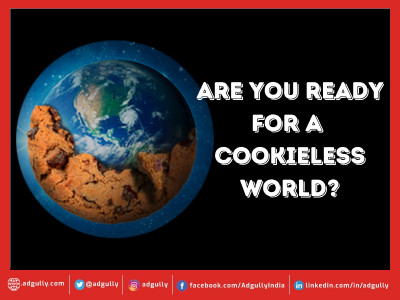How brands and agencies can gear up for a cookieless world
Third-party cookies were intended to anonymously keep information within the discretion of end users, but ad-tech companies used them to gather and link datasets in order to target and measure extremely targeted adverts.
As third-party cookies disappear, the breadth, availability, and quality of ad data and third-party processing will dwindle.
Processes for ad targeting, buying, and optimisation will be disrupted and hampered, particularly for performance-based campaigns and specialised audiences. As cookie data gaps weaken attribution and optimisation, incrementality testing, and app-to-web tracking, current ad measurement, attribution, and optimisation approaches will become peripheral or useless.
Google hailed the removal of third-party cookies as a crucial step towards more privacy for online browsers, and it follows Apple’s April 2021 iOS update 14.5, which included a new permission framework known as App Tracking Transparency (ATT). ATT regulates and limits how applications and marketers may target, monitor, and improve campaigns using personally identifiable data such as device ID.
As third-party cookie data becomes obsolete, marketing executives must prepare for a future of consent-based advertising.
Google intends to discontinue formally supporting third-party cookies on its Chrome browser by the end of 2023, thereby eliminating two decades of media- and data-driven performance-focused advertising. Marketing executives and their teams must prepare for a world without cookies by focusing on consent-based advertising. This will entail revamping playbooks, resetting measurement, and re-evaluating Google expenditure.
But, the pertinent question is: How are brands and media agencies gearing up for a cookieless world?
Vineet Shah, General Manager, Madison Digital, felt that only those advertisers who are currently building their bottom funnel by activating top funnel audiences with the help of 3P cookies will be affected.
“If you’re thinking that all your cookie-fueled marketing strategies will soon meet a dead-end, take a breather. So far, Google says it is only planning to phase out the 3P cookies on its browsers. However, 1P cookies that track basic data on advertisers’ own website’s visitors are still safe. So, what exactly will change? Advertisers aiming to collect user’s behaviour and data on their website won’t be deeply impacted by this change. Advertisers who are currently building their bottom funnel by activating top funnel audiences with the help of 3P cookies will be affected,” he elaborated.
The world will slowly move from deterministic 3P data to probabilistic model with AI playing a crucial role; 1P audiences and customer data like PII will gain more importance. Solutions like Privacy Sandbox, a Google Initiative, will help in standardising usage of audience cohorts, Additionally, SDK-based data aggregators will now gain significant momentum in cookie-less world. SDK’s will retain a lot of behavioural data, making it more sustainable and efficient-identifier than cookies.
For conventional DMP partners who ride on 3P cookie deployment, their 3P business might take a hit. These partners can still exist with an emergence of Identity Graphs technology. An identity graph provides a single unified view of customers and prospects based on their interactions with a product or website across a set of devices and identifiers. Lastly, a manual approach can be explored to crack data-led integrations and partnerships for sharing 1P audiences in an encrypted manner.
“While the cookieless world might attract a lot of standardisation in its audience-buying approach, advertisers can still deploy campaigns in a cohortised manner, with little tweaks in the way they deploy these audiences,” Vineet Shah further added.
“As we get ready for the cookieless world, marketers must accept the undeniable future of consent-based advertising,” remarked Shrenik Gandhi, Co-founder & CEO, White Rivers Media.
“I concur that without third-party cookies, the standard methods for collecting, sharing, and using consumer data will change, thereby changing the personalised marketing strategies. However, by using data-driven insights, analysis, and innovation, we can continue to provide our consumers with satisfying experiences while protecting their privacy. Providing value throughout the customer journey and treating data with care will be prerequisites for succeeding in the cookie-less world,” he added.
And as a brand, how you can gear up?
According to Shrenik Gandhi, first-party data is set to be the new oil of the digital economy. “It’s time for brands to strengthen their consumer relationships by being transparent and trustworthy. In the cookieless world, brands will need to collect relevant data from actions and interests displayed across applications and websites, CRM data, and data gathered from subscriptions, to name a few. For brands to maximise their influence, they must be able to connect these dots and engage with consumers in a responsible manner.”
Not the end of online advertising
According to Chimp&z Inc COO Ashish Duggal, the digital ecosystem’s aesthetics and agile nature makes it receptive to continuous change.
“The audience is becoming increasingly cognizant about their data privacy while still expecting a tailored ad experience. With the clock ticking, instead of concentrating on the phasing-out of third-party cookies, digital agencies must educate and encourage brands to leverage their first-party data. One thing digital advertisers should remember is that the end of third-party cookies is not the end of online advertising. To stay up with customer expectations, brands must embrace the concept of consent-based data by reinventing their data practices,” Duggal concluded.






Share
Facebook
YouTube
Tweet
Twitter
LinkedIn